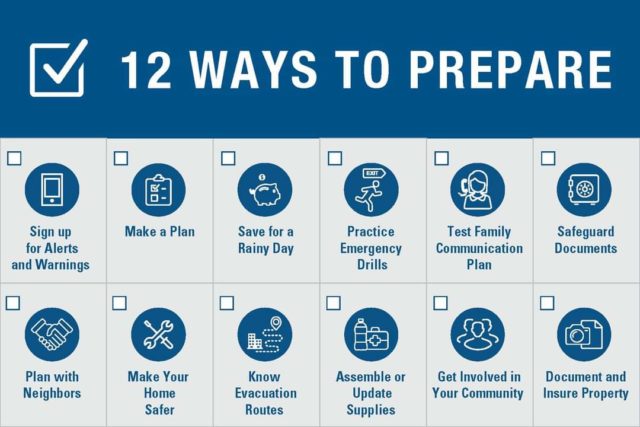
Provided by Steve Smith
USAG Stuttgart Emergency Manager
September is National Preparedness Month. The Federal Emergency Management Agency (FEMA) created the National Preparedness Month (NPM) three years after the September 11, 2001 attacks to encourage every American to plan for emergencies. The theme for National Preparedness Month this year is, “A Lasting Legacy: The life you’ve built is worth protecting. Prepare for disasters to create a lasting legacy for you and your family.” The U.S. Army’s “Ready Army” program has four main components: Be Informed, Make a Plan, Build a Kit and Get Involved. Today, we’ll focus on having a plan.
Make a plan today. Your family may not be together if a disaster strikes, so it is important to know which types of disasters could affect your area. Know how you’ll contact one another and reconnect if separated. Establish a family meeting place that’s familiar and easy to find.
Step 1: Put a plan together by discussing the questions below with your family, friends or household to start your emergency plan:
- How will I receive emergency alerts and warnings?
- What is my shelter plan?
- What are my evacuation route?
- What is my family/household communication plan?
- Do I need to update my emergency preparedness kit?
Step 2: Consider specific needs in your household.
As you prepare your plan, tailor your plans and supplies to your specific daily living needs and responsibilities. Discuss your needs and responsibilities and how people in the network can assist each other with communication, care of children, work, pets or specific needs like operating medical equipment. Create your own personal network for specific areas where you need assistance. Keep in mind some these factors when developing your plan:
- Different ages of members within your household
- Responsibilities for assisting others
- Locations frequented
- Dietary needs
- Medical needs including prescriptions and equipment
- Disabilities or access and functional needs including devices and equipment
- Languages spoken
- Cultural and religious considerations
- Pets or service animals
- Households with school-aged children
Step 3: Create a Family Emergency Plan
Make and practice a family emergency plan. Consider the range of potential emergencies and all the places you and your family might be. Some emergencies require different responses than others, but a family communications procedure will be helpful in any case. Knowing how to keep in touch and find one another will help your family stay safe and cope with the confusion and fear that come when emergencies strike.
Step 4: Practice your plan with your family/household
Making an emergency plan is just the first step; you should practice it at least twice a year. Describe to family members a hypothetical event and tell them to follow the family emergency plan. Practice gathering your emergency kit and important documents, communicating with one another and meeting at a designated place. Afterwards, discuss the actions you took and how the plan would change in a different type of emergency.
Additional information and resources via Ready.gov
Family Emergency Plan template (printable handout)
